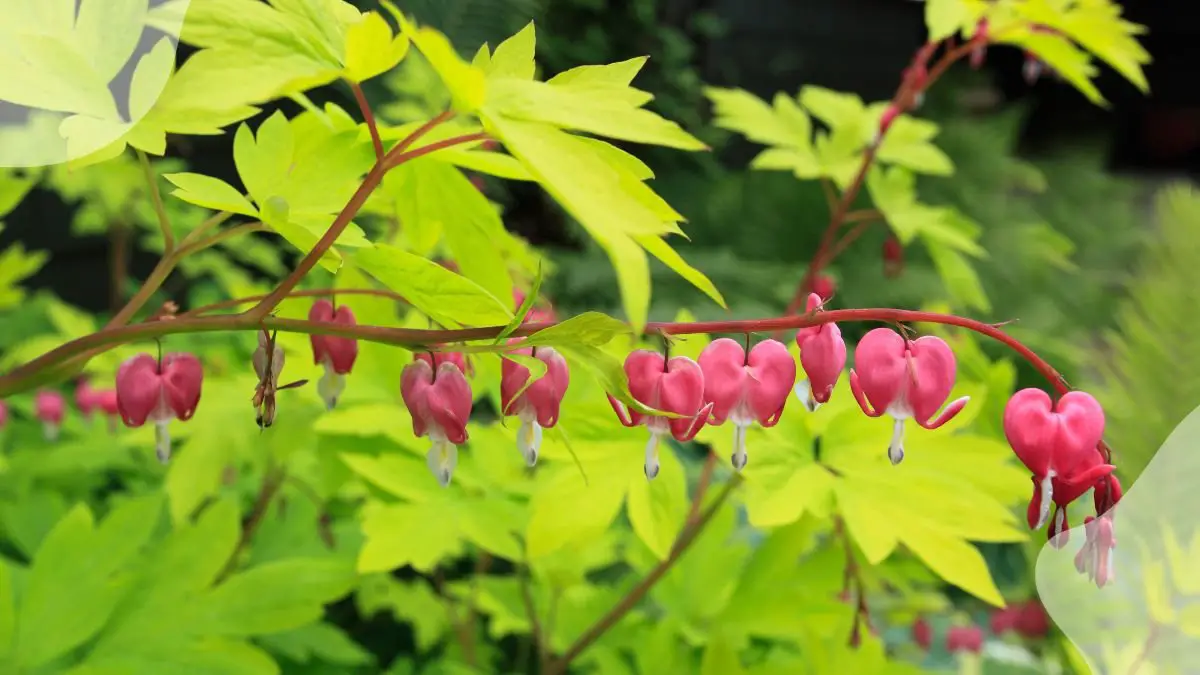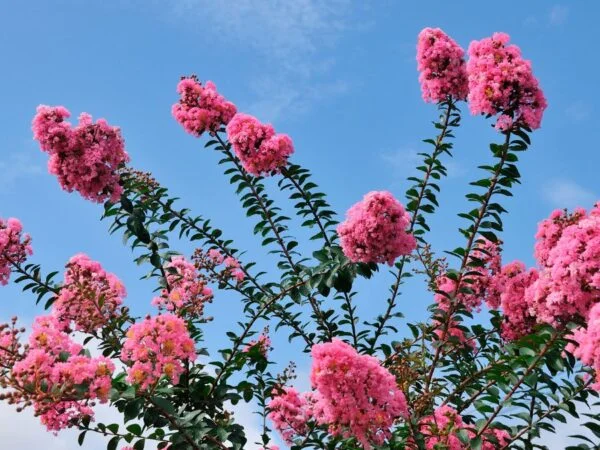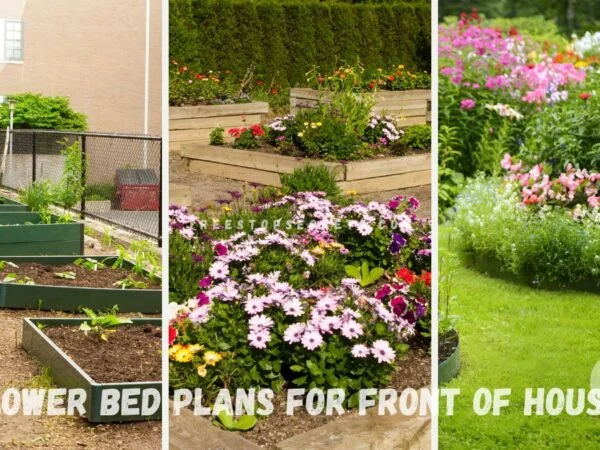Looking to add some greenery to those shady spots in your garden with attractive shade plants, colorful shade plants, grassy foliage, or foliage plants? Wondering which perennial plants thrive in full shade? Imagine transforming those dim corners into vibrant oases with lush foliage and colorful blooms. Picture a garden that flourishes year after year without the need for constant sunlight. Curious about the best options for low-light conditions? Discover a variety of resilient and beautiful perennial plants that can thrive in full shade, enhancing the beauty of your outdoor space effortlessly. Ready to explore a world of possibilities for your shaded garden areas and add color with blooming zones?
Key Takeaways
- Choose shade-loving perennials: Opt for plants like hostas, ferns, and bleeding hearts that thrive in full shade conditions.
- Prepare the soil: Ensure good drainage and amend the soil with organic matter before planting shade perennials to promote healthy growth.
- Regular watering and mulching: Keep the soil consistently moist but not waterlogged, and add a layer of mulch to retain moisture and suppress weeds.
- Monitor for pests and diseases: Check your shade plants regularly for common issues like slugs or powdery mildew, and take prompt action to prevent damage.
- Seasonal maintenance: Trim back dead foliage in fall, protect tender perennials in winter, and divide overcrowded plants in spring for optimal growth.
- Experiment with different varieties: Explore a range of full shade perennials such as astilbes, lungworts, or foamflowers to create a diverse and visually appealing garden.
Understanding Shade Gardens
Defining Full Shade
Full shade in gardening refers to areas that receive no direct sunlight during the day. Plants suited for full shade thrive in minimal light conditions compared to partial shade. Examples of plants that flourish in full shade include hostas, ferns, and coral bells.
Benefits of Shade Plants
Incorporating shade plants in your garden not only adds visual appeal but also creates a tranquil environment. Shade plants attract wildlife such as birds and butterflies, enhancing the biodiversity of your garden. The presence of shade plants provides a cooling effect, making outdoor spaces more comfortable.
Plant Needs in Shaded Areas
Plants growing in shaded areas require specific care to thrive. Proper light exposure is crucial for shade plants to photosynthesize effectively. Selecting the right soil type, such as well-draining soil rich in organic matter, is essential for the healthy growth of shade-loving plants.
Choosing Perennials for Full Shade
Characteristics of Shade Perennials
Shade perennials stand out for their adaptability to low light conditions, thriving where other plants struggle. They offer a diverse array of colors and textures, adding depth and interest to shaded areas. These plants are known for their resilience in various climate conditions.
Shade perennials come in hues ranging from vibrant greens to deep purples, enriching shaded gardens with their visual appeal. Their textures vary from delicate fern-like leaves to bold, broad foliage, creating a dynamic landscape even in low-light settings with a perennial shade plants collection. These plants can withstand cool temperatures and moist soils, making them versatile choices for shade gardens.
The adaptability of shade perennials allows them to flourish in different climate conditions, from humid summers to chilly winters. Their ability to thrive in the shade makes them ideal for areas with limited sunlight, ensuring consistent growth throughout the year.
Perennial Bulbs in Shade
Certain perennial bulbs, such as hostas and ferns, excel in shady environments, adding charm and elegance to shaded landscapes. When planting these bulbs, it's crucial to consider the depth and spacing requirements to promote healthy growth. By spacing bulbs adequately and planting them at the correct depth, gardeners can ensure optimal development.
Perennial bulbs in full shade exhibit seasonal blooming patterns, offering bursts of color and beauty throughout the year. From spring blooms to late summer flowers, these bulbs add a touch of vibrancy to shaded areas, enhancing the overall aesthetic of the garden.
Longevity of Shade Plants
Shade plants boast impressive longevity and durability compared to annuals, providing years of beauty without the need for frequent replanting. Once established, these plants contribute to the garden ecosystem by attracting beneficial insects and wildlife. Their presence enhances biodiversity and promotes a healthy balance within the garden environment.
Established shade plants require minimal maintenance, making them an excellent choice for busy gardeners seeking low-maintenance options. With proper care and occasional pruning, shade perennials can thrive for many years, offering continuous beauty and greenery in shaded areas.
Preparing Your Garden for Shade Perennials
Soil Requirements
Shade perennials thrive in well-draining soil that is rich in organic matter to support their growth. The ideal pH level varies depending on the type of shade plant, with most preferring slightly acidic to neutral soil. To enhance soil quality, amend it with compost to improve drainage and provide essential nutrients for the plants to flourish.
When cultivating shade perennials, understanding the specific soil requirements is crucial for their overall health and vitality. Different types of shade plants have varying preferences for soil pH levels, impacting their ability to absorb nutrients effectively. By adjusting the pH based on the plant's needs, you can create an optimal environment for growth.
To ensure successful growth of shade perennials, it is essential to amend the soil to address any deficiencies and promote better drainage. Adding organic matter like compost or peat moss can help improve soil structure, allowing roots to access water and nutrients more efficiently.
Moisture and Drainage
Maintaining proper moisture levels is key to the health of shade plants, as they are sensitive to both overwatering and underwatering. Overly wet conditions can lead to root rot and fungal diseases, while insufficient moisture can stunt growth and flowering. Regular monitoring of soil moisture levels is essential for preventing these issues.
Overwatering can suffocate plant roots by displacing oxygen in the soil, leading to root decay and poor nutrient uptake. On the other hand, underwatering can cause stress and wilting in shade perennials, affecting their overall vigor and resilience. Achieving a balance in moisture levels is critical for maintaining healthy plants in shaded areas.
To ensure optimal growth, it is important to strike a balance between adequate moisture and good drainage in shaded garden areas. Incorporating organic mulch around plants can help retain moisture while preventing waterlogging, promoting a healthy root system and overall plant vigor.
Plant Spacing
Proper plant spacing plays a vital role in ensuring that shade perennials have enough room to grow and thrive. Factors such as the mature size of the plants, their growth habits, and light requirements should be considered when determining the ideal spacing between them. By providing adequate space, you can prevent overcrowding and competition for resources among plants.
Maximizing space utilization in shaded garden areas involves strategically planning the arrangement of shade perennials. Grouping plants with similar growth requirements together can help optimize space while creating visually appealing plant combinations. Consider incorporating taller plants at the back of borders or under trees to make the most of available sunlight in shaded areas.
Planting Shade Perennials
When to Plant
To ensure successful growth, plant shade perennials in early spring or fall. These periods offer ideal conditions for root establishment and growth. Consider local climate variations when deciding the planting time.
Spring planting allows plants to establish roots before the heat of summer, while fall planting gives them a head start for the following year. Adjust your planting schedule based on your region's weather patterns and frost dates.
- Spring: Ideal for establishing roots before the harsh summer heat.
- Fall: Provides a head start for the next growing season.
- Consider local climate variations for optimal planting times.
How to Plant
Start by selecting healthy plants with well-developed roots for successful transplantation. Dig a hole twice as wide as the root ball and at the same depth as the plant was previously growing.
Transplant established shade perennials carefully, ensuring minimal disturbance to the roots. Water thoroughly after planting to help settle the soil around the roots and remove any air pockets.
- Choose healthy plants with well-established roots.
- Dig a hole twice as wide as the root ball and at the same depth.
- Transplant carefully to minimize root disturbance.
- Water thoroughly after planting to settle the soil.
When transplanting shade perennials, handle them gently to avoid damaging the delicate roots. Ensure that the root ball remains intact during the transfer process to promote successful establishment in their new location.
Care Guide for Shade Perennials
Watering Needs
Shade plants have specific watering needs that vary throughout the growing season. Adjust watering frequency according to weather conditions to prevent overwatering or underwatering. Deep watering is crucial to promote healthy root development and ensure plant resilience.
Feeding and Mulching
Feeding shade plants with appropriate fertilizers benefits their growth and overall health. Mulching plays a vital role in retaining soil moisture and regulating temperature, especially in shady areas. Opt for organic mulch to enhance soil fertility and create a conducive environment for shade perennials.
Pruning and Deadheading
Pruning and deadheading are essential tasks for maintaining the vitality of shade plants. Different types of shade perennials require specific pruning techniques to encourage new growth and maintain shape. Regular deadheading promotes continuous blooming by removing spent flowers and encouraging fresh blooms.
Common Questions on Shade Plants
Pest Management
Shade plants are susceptible to common pests such as aphids, spider mites, and slugs. These pests can cause significant damage if not managed effectively. To identify pest infestations early, regularly inspect the leaves and stems for any signs of pests or damage. Implementing cultural controls like proper spacing between plants can also help prevent pest issues.
When it comes to managing pests in shade plants, natural pest control methods can be highly effective. Introducing beneficial insects like ladybugs or lacewings can help keep pest populations in check without the need for harmful chemicals. Using organic insecticidal soaps or neem oil sprays can target pests while being safe for the environment.
- Pros:
- Environmentally friendly pest control methods
- Safe for beneficial insects in the garden
- Cons:
- May require more frequent applications compared to chemical pesticides
Disease Prevention
Preventing diseases in shade plants is crucial for their health and longevity. Good air circulation is key to preventing fungal diseases in shaded areas. Ensure that plants are not overcrowded and prune them regularly to promote airflow. Proper watering practices, such as avoiding overhead irrigation, can also help reduce the risk of fungal infections.
Early detection is essential when it comes to disease prevention in shade perennials. Regularly inspect plants for any signs of disease, such as unusual spots or discoloration on leaves. If a disease is detected, promptly remove and dispose of affected plant parts to prevent further spread. Consider using preventive fungicides to protect healthy plants from potential infections.
- Adequate air circulation
- Regular inspection for disease symptoms
- Prompt removal of infected plant parts
Seasonal Care for Shade Perennials
Spring Care
Spring is a crucial time for perennial plants in full shade. Begin by removing any winter debris to prevent diseases. Pruning dead branches and shaping plants will encourage new growth. Rejuvenate the soil with compost or organic fertilizer for optimal health.
During spring, ensure proper watering to support new growth. Mulching helps retain moisture and suppresses weeds. Consider dividing overcrowded plants to promote better air circulation. This prevents diseases and enhances the overall appearance of your shade garden.
Summer Maintenance
In summer, consistent watering is essential for shade perennials. Mulching conserves moisture and regulates soil temperature. Protect plants from heat stress by providing afternoon shade or using shade cloth. Regularly inspect for pests and diseases to address issues promptly.
To prevent sunburn, strategically place taller plants to provide natural shade for smaller ones. Deadhead spent flowers to encourage continuous blooming throughout the season. Consider adding a layer of compost around plants to boost nutrient levels.
Preparing for Winter
As winter approaches, start preparing your shade perennials for the cold months ahead. Apply a thick layer of mulch around plants to insulate roots from freezing temperatures. Protect tender plants by covering them with burlap or frost cloth during frosty nights.
In colder climates, consider overwintering tender perennials indoors. Gradually acclimate plants to indoor conditions before the first frost. Prune back excessive growth to reduce stress on the plant during winter dormancy.
Top Picks for Full Shade Perennials
Bold Colors Varieties
Bold-colored varieties of shade perennials like Astilbe, Bleeding Heart, and Hostas bring vibrancy to shaded gardens. These plants stand out with their striking hues, creating focal points amidst the dimmer surroundings. Combining reds, purples, and pinks can enhance visual interest in shaded areas.
In shaded spaces, bold colors play a crucial role in brightening up the environment and attracting attention. By strategically placing plants with vibrant hues, you can draw the eye to specific areas in your garden. This creates a dynamic landscape that captivates viewers.
- Pros:
- Adds vibrancy to shaded gardens
- Creates focal points
- Enhances visual interest
- Cons:
- May clash if not carefully planned
- Requires regular maintenance for optimal display
Interesting Foliage Types
Dive into the world of shade plants with their diverse foliage types, ranging from fern-like fronds to large, variegated leaves. Each variety offers unique textures and structures that contribute to the overall appeal of a garden. The versatility of these foliage types allows for endless possibilities in landscaping.
The varied textures and shapes of foliage types in shade plants add depth and dimension to any garden. Whether it's the delicate fronds of ferns or the bold leaves of Heuchera, each plant brings its own charm to the shaded landscape. Experimenting with different foliage types can transform a dull space into a visually captivating oasis.
- Different foliage types offer unique textures and structures
- Versatility allows for endless landscaping possibilities
Final Remarks
You've now got the lowdown on creating a thriving shade garden with perennial plants. By understanding the nuances of shade gardening, selecting the right perennials, and following our care guide, you're set for success. Remember, preparation is key when it comes to planting and maintaining shade perennials.
Now it's your turn to get your hands dirty and bring your shade garden to life. Follow our tips, choose your favorite full shade perennials, and watch as your garden flourishes in the cool embrace of shade. Happy gardening!
Frequently Asked Questions
What are the benefits of planting perennial plants in full shade?
Planting perennial plants in full shade offers a low-maintenance garden solution, reduces soil erosion, conserves water, and provides a lush green landscape even in shaded areas.
How can I determine if my garden has full shade for planting perennials?
Full shade areas receive no direct sunlight during the day. You can assess your garden's sunlight exposure by observing the shadow patterns throughout the day or using a sunlight meter to measure light levels.
Do shade perennials require special care compared to other plants?
Shade perennials generally require less maintenance due to reduced sun exposure. However, they may need occasional fertilization, watering, and pruning to thrive in low-light conditions.
Can I mix shade perennials with other types of plants in my garden?
Yes, you can create a diverse garden by combining shade perennials with other plant types. Consider the light requirements and growth habits of each plant to ensure they complement each other and thrive together.
Are there any common pests or diseases that affect shade perennials?
Common pests that may affect shade perennials include slugs, snails, and spider mites. Diseases like powdery mildew can also impact these plants. Regular monitoring, proper spacing, and good air circulation can help prevent pest and disease issues.
Image Source: Paid image from CANVA




